What is public transportation?
Trains, buses, taxis, planes, ships, and other modes of transportation that anyone can use for a fee are called "public transportation."
You can go anywhere easily in Tokyo because there are so many trains, buses, and taxis.
Trains
JR (Japan Railway), private railways, and subways are available in Tokyo.
They run very accurately on time. You can travel without traffic jams.
You can travel around easily after you learn full use of trains.
Route-searching websites and apps can help you find out which train will get you to your destination the fastest.
[Train fare]
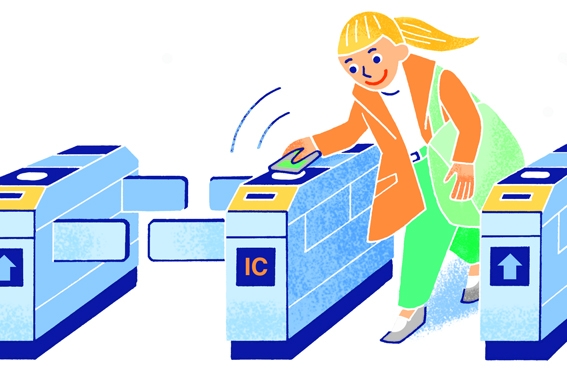
Fares can be paid by purchasing a ticket or by charging a transportation IC card (prepaid transportation card).
The fare is withdrawn by scanning your transportation IC card on the gate.
The fare with a transportation IC card is slightly cheaper than buying a ticket.
[Transportation IC card]
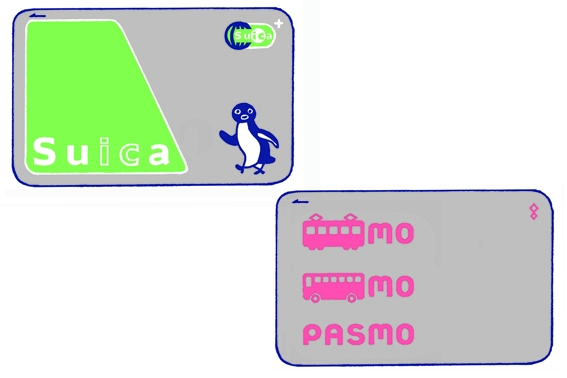
Transportation IC cards that can be used in Tokyo include "Suica" sold by JR and "PASMO" sold by private railway and subway companies.
Both can be used when riding JR, private railways, and subways, as well as when riding buses and as electronic money when shopping.
Suica and PASMO can be purchased at ticket vending machines or at train ticket offices. You can also add money at the ticket vending machine.
[Commuter pass]
For those who commute to work or school, it is cheaper to buy a commuter pass than to pay the fare every day.
You can take the train as many times as you like from the station near your house to the station where your school or workplace is located.
You can purchase a pass for 1 month, 3 months, or 6 months.
Fees differ depending on whether you commute to work or school.
You can buy a commuter pass at a ticket vending machine or at a train ticket office.
[Discount transportation ticket]
There are many discount tickets available, such as the “1-Day Pass”, which allows you to ride trains and buses in Tokyo as many times as you like in one day.
It is convenient to enjoy sightseeing in Tokyo.
GO TOKYO: Cheap Tickets & IC Cards (Japanese, English, Chinese, Korean, Thai, German, Italian, Spanish, and French)
[Rules and manners]
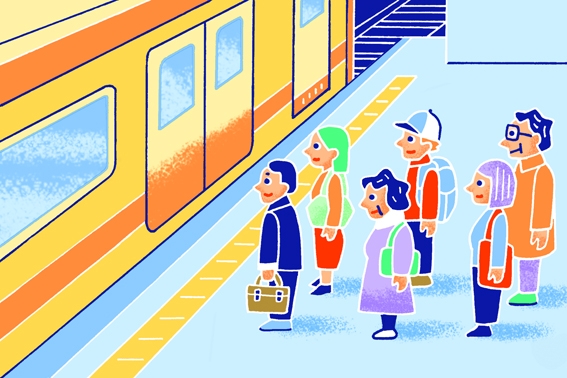
Be aware of the following when using trains:
- Wait in line for the train at the station platform.
Stand behind the yellow line at the platform.
- Wait for people to get off when the train door opens.
Get on the train only after there are no people getting off.
- Do not speak loudly in stations or inside trains.
Set your mobile phone to silent mode and do not talk on the phone.
- Keep your luggage out of the way of others.
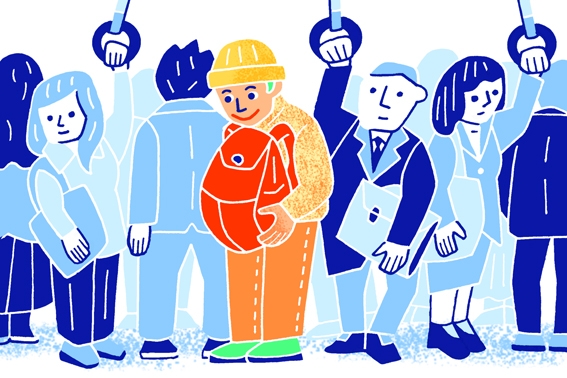 Hold your backpack in front of you or in your hand when the train is crowded.
Hold your backpack in front of you or in your hand when the train is crowded.
[Women-only train car]
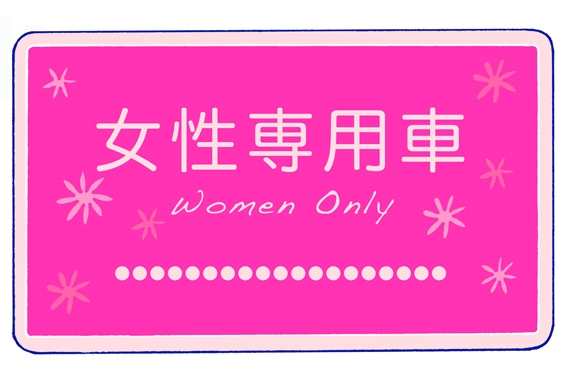
During the morning rush hour, there are some trains with “women-only car" that only allow women to ride.
They are indicated by pink stickers on station platforms and train windows.
Small children and people with disabilities and their caregivers are allowed to ride in women-only cars regardless of gender.
Buses
If you want to go to a place far from the train station, it is convenient to take a “route bus” that runs through the city.
Check the following at the bus company’s website since bus routes are very complex with many routes.
- Which bus to take?
- Where is the bus stop for that bus?
- Which bus stop to get off?
[How to ride route buses]
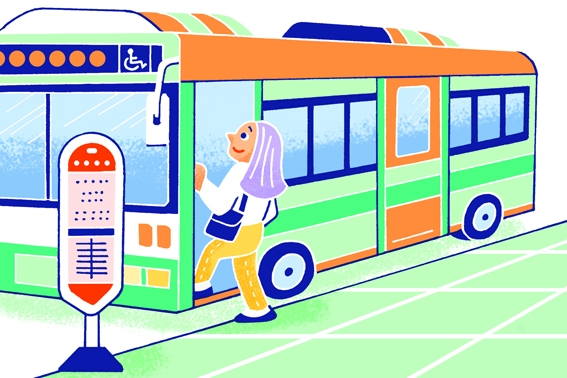
The followings are the instruction for riding the "Toei Bus (Metropolitan Bus)" in the 23 wards that are located on the east side of Tokyo:
1 Wait at the bus stop for the bus that will take you to your destination.
2 Get on from the front door when the bus arrives to the bus stop.
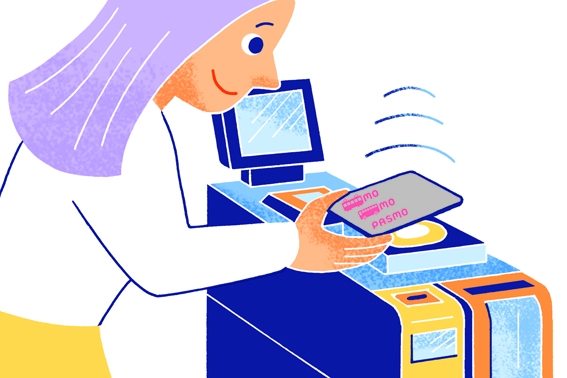
3 Insert money into the "fare machine" next to the driver's seat or touch the transportation IC card.
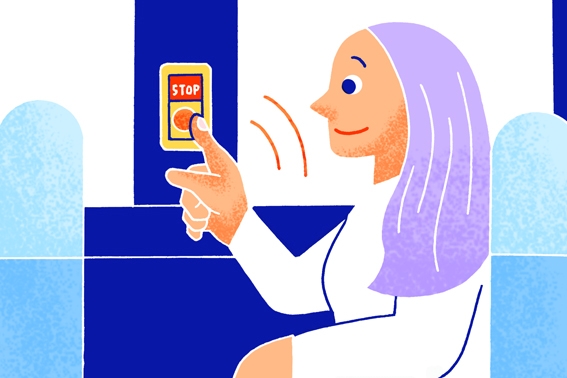
4 When the destination is approaching, press the "get off button" near your seat and sound the buzzer.
5 Exit through the rear door when the bus stops completely at the bus stop.
When boarding a Toei Bus in the Tama area that is located on the west side of Tokyo, board from the rear door and get off from the front door.
Please see this website for more details.
Toei Transportation: How to use buses (Japanese, English, Chinese, Korean, Thai, Spanish and French)
Taxis
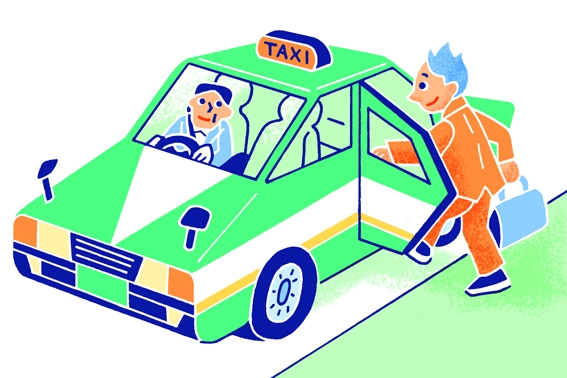
You can take a taxi to your destination from the taxi ranks at stations or hotels.
Or you can pick up a taxi on a street by raising your hand if the taxi indicates "vacant" sign.
Also, you can call a taxi to be picked up at the place and time you want by an app.
You may be charged a "pick-up fee" when you call a taxi.
The charge is higher from 10:00 pm to 5:00 am. (“late night charge")
[How to take a taxi]
1 Wait for the left rear door to be opened when the taxi arrives.
Get in the taxi when the door opens.
2 Tell the driver your destination.
Give the driver something that shows your destination if you can't speak Japanese very well.
3 Pay the driver when you arrive at your destination.
In addition to cash, you can also pay with credit cards, electronic money, QR codes, etc.
4 Wait for the door to be opened and get off from the taxi.












